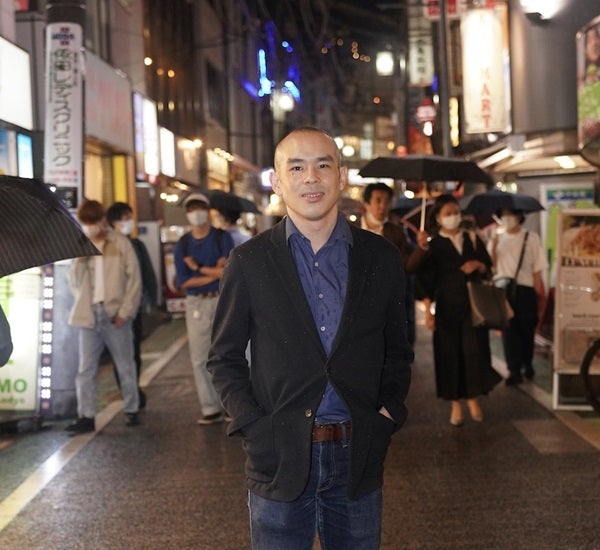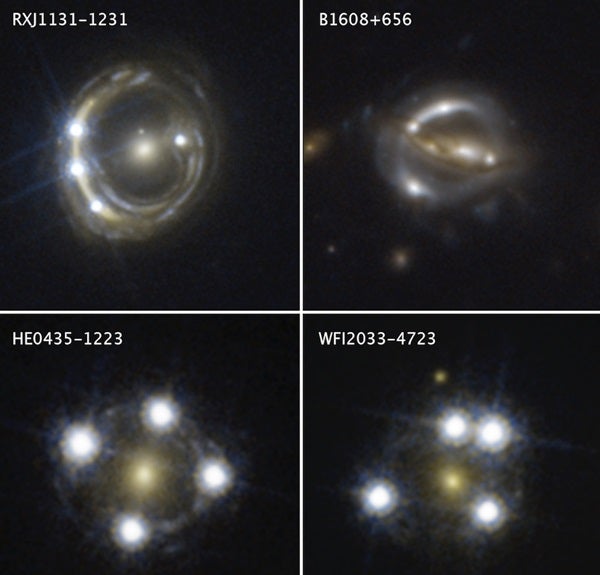What fascinated Kenneth Wong about astronomy as an undergraduate was that despite its grand scale, “physics is the same on Earth as it is out there. So a lot of the principles you learn in the classroom, you apply them, and they work on large scales also.”
Today, Wong, 36, exploits one such principle on the largest possible scale: Just as a lens can bring to a point light coming from across a classroom, the gravitational pull of a galaxy cluster can focus light across billions of light-years, producing multiple images of a single distant object on the sky. By using these cosmic gravitational lenses to measure how quickly the universe is expanding, Wong and his colleagues at the H0LiCOW collaboration are working on one of the most intriguing mysteries in cosmology.
The heart of the problem is a number known as the Hubble constant (H0 ), a measure of the universe’s rate of expansion. Thanks to the European Space Agency’s Planck satellite, which observed the cosmic microwave background radiation left by the Big Bang, scientists know that under prevailing cosmological theory, H0 = 67.4 kilometers per second per megaparsec.
But in 2016, a different team studying type I supernovae in distant galaxies found that H0 is significantly higher, between 71.5 and 75 km/s/Mpc. “This actually points to something going on,” says Wong. If their methods are sound, then perhaps our entire prevailing cosmological theory is wrong.
H0LiCOW, which stands for H0 Lenses in COSMOGRAIL’s Wellspring, emerged as an important independent check. The team looks for a lensed object that changes brightness over short timescales, like a quasar gobbling up matter from its surroundings. Since the light in each image formed by the gravitational lens takes a different path, any changes in brightness appear in each image at a slightly different time. By taking into account the delay, the distribution of mass in the lens, and the distance to the lensed object, H0LiCOW researchers can determine H0.
Wong began working on H0LiCOW with its founder Sherry Suyu in Taipei, Taiwan, at Academia Sinica as a postdoc in 2013; he’s since moved to the National Astronomical Observatory of Japan in Tokyo. In 2020, the team published their analysis of six lensed quasars. Wong led the modeling of two of the six lenses and was the study’s first author.
Their results? They found H0 = 73.3 km/s/Mpc, in line with the higher number, which challenges our current cosmological theories. There are enough independent measurements now, including H0LiCOW, that Wong says, “I think the tension is real. There’s something in cosmology that we don’t quite understand yet.”
Make sure to explore our full list of 25 rising stars in astronomy. Check back each week for a new profile!
To get the latest astronomical news and observing content delivered directly to your door, subscribe to Astronomy magazine today!











